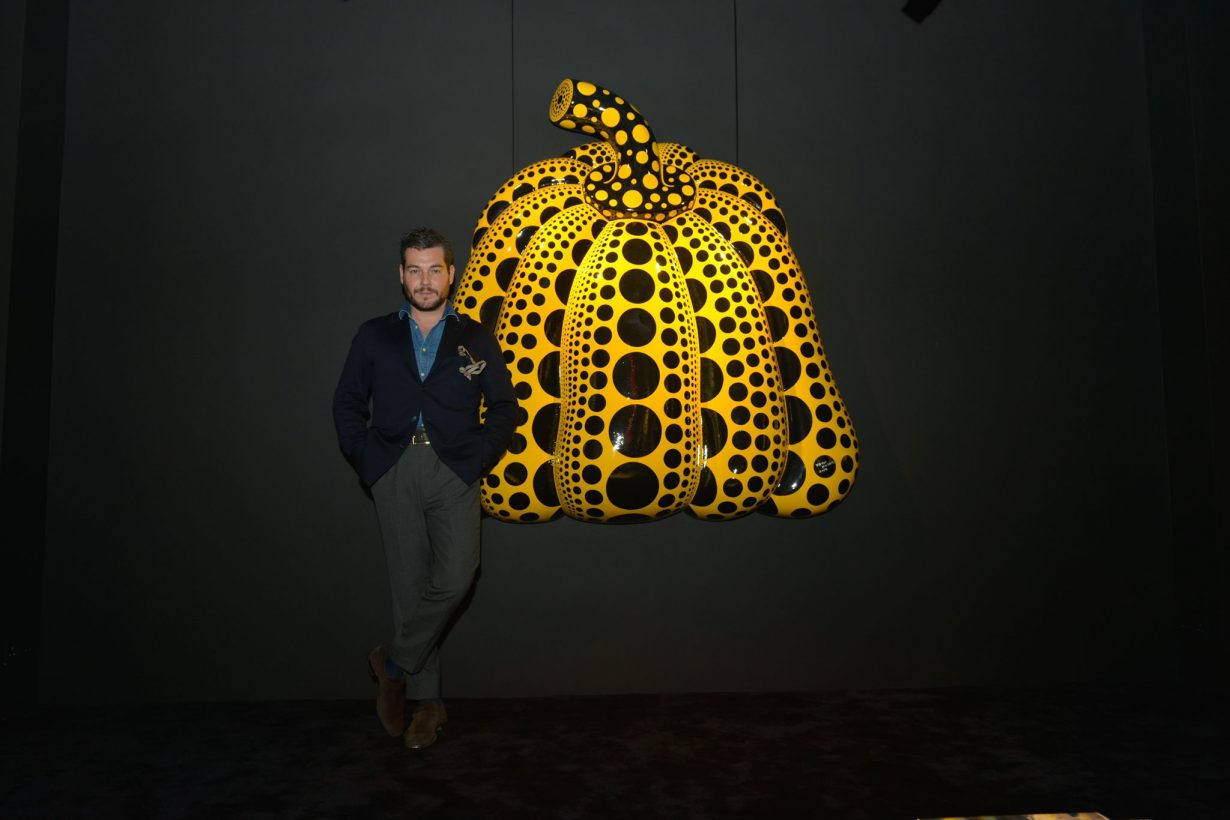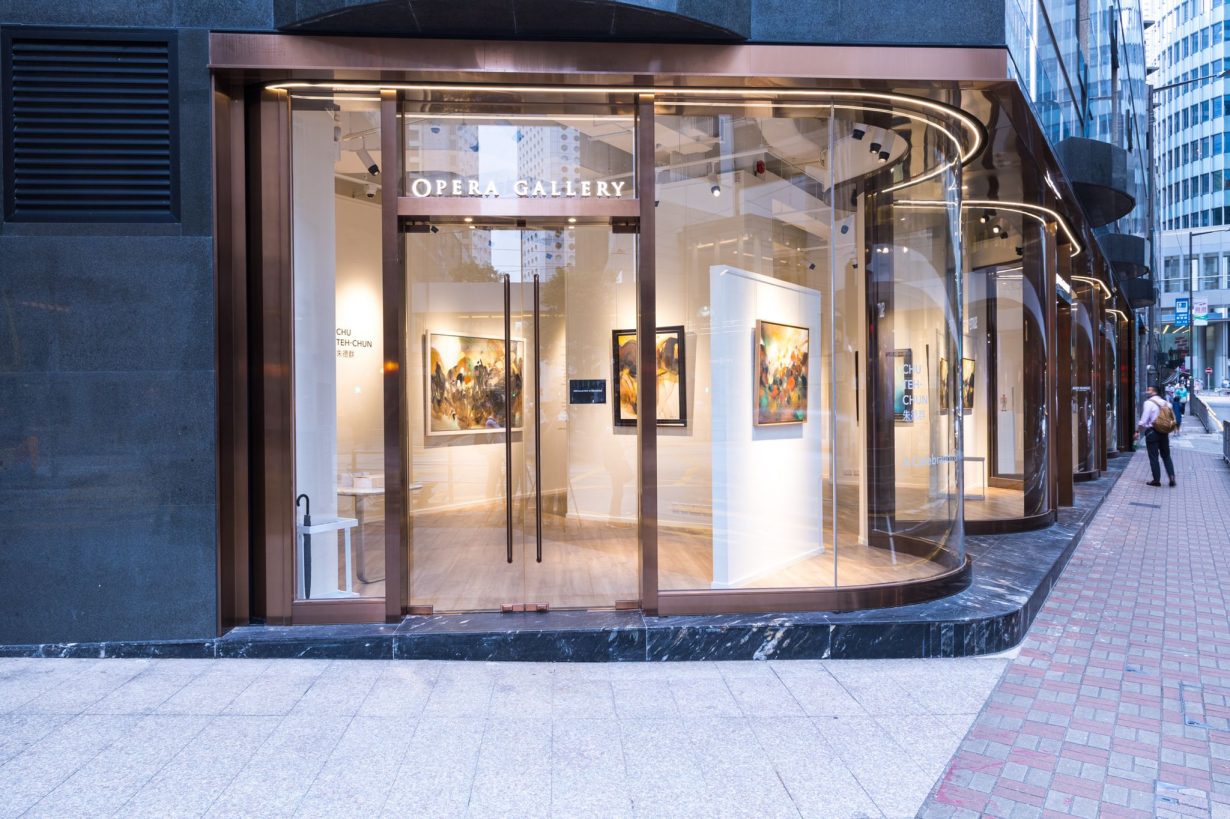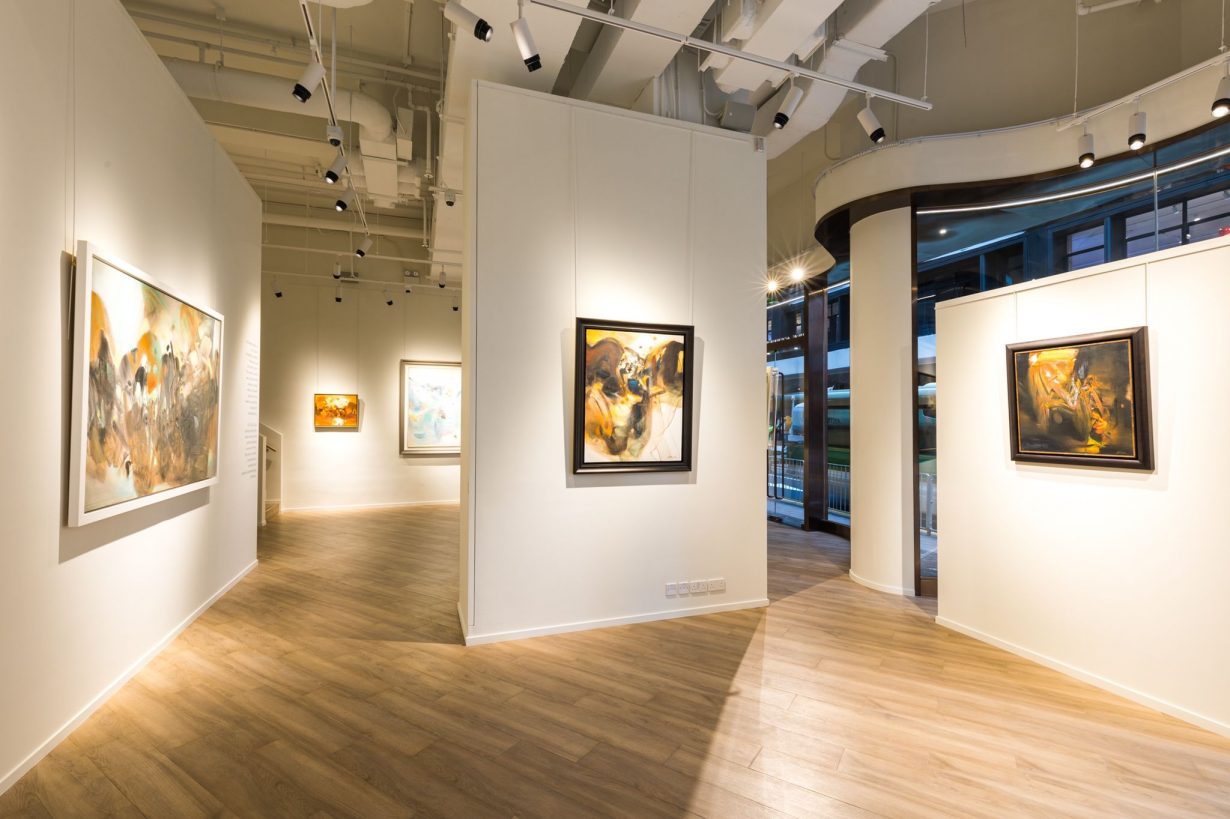After seventeen years in Hong Kong, the gallery has launched a new space spanning 510 square metres across 3 floors in the heart of the city

Founded in 1994 by Gilles Dyan, Opera Gallery now comprises 13 spaces in New York, Miami, Bal Harbour, Aspen, London, Paris, Monaco, Geneva, Beirut, Dubai, Hong Kong, Singapore and Seoul. Its inaugural Hong Kong gallery opened in 2004 and this autumn it moved to a new location at The Galleria, 9 Queen’s Road Central. We speak to the space’s new director Olivier Demblum to find out more about his plans for the gallery programme and what it takes to create a meaningful space for collectors and the public to encounter masterpieces.

ArtReview What does the specific context of working in Hong Kong mean to the gallery? For instance, what first attracted the gallery to the city in 2004? And how did it adapt to building a network and community there?
Olivier Demblum We settled our presence in Asia in 1994 and in Hong Kong in 2004 – as one of the first to move there among international galleries. Hong Kong was a very natural choice, based on relationships that Gilles [Dyan] already had in place in the region after he opened the gallery in Singapore. Within the past twenty-seven years we have built and nourished relationships with local art collectors who trust us and rely on us to advise them on their purchases, whether on the primary or secondary market. We avoid trends and aim to serve our clients via a rationale of emotional sensitivity and capital preservation and we believe Hong Kong will remain a major place for the art market in Asia.
AR And how has your programming and modes of working with collectors shifted as the city itself has changed over the decades? Are there distinct aspects of curating for a local audience?
OD We are a gallery of conviction. And so are our clients. We naturally leverage our global presence around the world to curate outstanding pieces – among artists and collectors – that we like to bring to other continents because we know they can add value to a collection. Some of the artists or art pieces that we show are sometimes seen as disruptive based on local roots and culture. But in a world where culture is turning global, we expect perceptions to evolve and we want to be present when customers will be ready. In Hong Kong for instance, an artist like Hermann Nitsch could be regarded as very disruptive. But we see him as an outstanding contemporary artist, who we think should be present in any important collection – also, someone whose work is still accessible at a reasonable price today.

AR And how does it feel to have finally moved to the new space – spanning 5,500 square feet across 3 floors – in Central? What instigated the move?
OD To grant artists as well as collectors a better exchange platform and an ideal space to showcase incredible masterpieces, we recently moved the gallery to a spectacular new space in Hong Kong. Based in the heart of Central, the new location was a unique opportunity to reinforce our presence in Hong Kong. Our gallery is at street level and our collection visible from the outside. The quality of our curation is a good incentive to enter the gallery. And the knowledge and passion of the team a good incentive to come back. I haven’t got used to the new space yet. It’s been two months already and I am still impressed every day when I push open the doors. I feel very privileged to work in this space. You won’t understand me until you have visited the location yourself.
AR How about your own journey, making the shift from working as a wealth manager and being a collector to becoming a gallerist: which artists have been most meaningful to your own collection? And what led you to want to make the artworld part of your professional life too?
OD From as far as I can remember, art has always been a destination of predilection. This is where I have always spent my time and money – as a kid first but also later in adulthood. I was born and spent my childhood next to Basel – surrounded by amazing foundations and museums with exceptional collections. I met amazing people who were leaders of the art industry and big collectors – who all in a way contributed to shape my eye and structure my approach to art and collecting. My mum has painting as a hobby. And my dad has sculpture. I tried to create by myself, but I realized that I was unable to create decent art pieces that could crystallize emotions. And so I started to collect, in order to enjoy for myself the beauty and emotions captured by others.
I began with collecting small bronzes because it was affordable. I bought my first piece in a flea market in Périgord, France, where we own a country house. I was fifteen and on holiday with my parents. I remember I spotted an important-looking, heavy, black Laughing Buddha. Once I arrived home, I started to clean it and discovered it was made of bronze. I spent four days cleaning it properly to restore its original patina. I was very excited and considered myself a treasure hunter back then. That’s how I caught the bug for bronzes. That Laughing Buddha has sat for years in my closet; it reminds me that sometimes the real value of things is not what you see.

In a collection that is properly structured, each artist is meaningful. A good collection is a puzzle where each piece has the same importance as another – as together they form the big picture. But if you were to ask me to name artists, I would perhaps choose Arman and César. Because of their sentimental value. Arman, because I purchased one of his Inclusion works as my first serious art piece. I had just started working and I bought it with my first salary. It is still in my living room. And César because I have a beautiful pressurized ink pen from him that accompanies me everywhere and reminds me that art can be everywhere and functional.
I worked in finance for more than fifteen years, focusing on building long-term relationships with ultra-high-net-worth individuals – assisting them in investing while preserving and growing their assets. Working in a gallery is not so very different. With the difference that clients do not just value performance, but emotions too. When I was contacted by Gilles – the founder and owner of the Opera Gallery group – I realized that I had been given a unique opportunity to turn my love of art collecting into a permanent journey. Art is a very stimulating universe and a few discussions with Gilles convinced me that I should embrace the change. Gilles is an amazing person, a man of passions with infinite human qualities. His sense of servicing clients and his approach to running the business are very healthy for both the company, artists and clients. I would have been a fool to refuse his offer.
AR How do you think that particular career arc impacts how you see the artworld, and what you bring to it?
OD As an end-customer first, I come with a very contrarian approach to things. I am demand driven. I have the ability to put myself in my clients’ shoes and know exactly what people expect from a high-end gallery. I won’t tell you our tricks, but entering Opera is not like any other experience in the world of art. My team is extremely knowledgeable and caring. Our goal is to maintain existing and build new longterm and sustainable relationships with customers. We aim for a 100 percent satisfaction rate of the people who contact or visit us. And we never say no to any request.

AR The new Hong Kong space opened with a show of work by the French-Chinese artist Chu Teh-Chun who drew on his training in Chinese calligraphy to create vibrant, abstract paintings – what was it about Chu’s work that felt like an appropriate marker/way to inaugurate the gallery?
OD Opera has been working with Chu since 2000. Last year was the celebration of the 100th anniversary of the artist’s birth and many galleries showcased his work. But we wanted to curate an exhibition that would show something different. So we took our time to carefully curate outstanding pieces that would illustrate four decades of the artist’s creations and evolution of his style. With our exhibition prepared and the gallery ready to open, we thought it would be the right place and occasion to run this show here.
AR And can you tell us more about the other artists you’re working with and plans for the new space – is that dialogue between tradition, art history and creating new visual languages, along with the relationship between China and the West, a thread that often runs through your programming?
OD We sell masters from the twentieth century as well as well notable contemporary artists who are today – for some of them – as disruptive as the old masters were back in time. Our roster includes artists from China and the West. Bernard Buffet, Chu and Georges Mathieu for instance are artists from the twentieth century that local collectors like to acquire. As far as contemporary artists are concerned, we see a lot of interest for Feng Xiao-Min, Andy Denzler, Manolo Valdés and André Brasilier. I think that the quality of the pieces we have access to, the emotions contained in the artworks as well as the regular support of auction houses who sell the same names are some of the reasons that contribute to this success.

AR Making art accessible to everyone and anyone has been an important principle for the gallery. Can you tell us more about your plans for public programming/education at the Hong Kong outpost? What does it take to create a meaningful space for both collectors and the general public to encounter art?
OD We want to stimulate the art scene and be more present than in the past. We have plans for solo shows and fairs in the pipeline to bring amazing international artists to Hong Kong. We are working with other platforms to create high-end, disruptive forums of exchange for our collectors and other art enthusiasts. And we are working on a collectors’ club where our collectors and friends can mingle and cross-fertilize ideas to enrich their networks and knowledge.
Opera Gallery Hong Kong
Shop G08-09, The Galleria, 9 Queen’s Road Central, Central, Hong Kong
Opening Hours: Mon-Sat: 10am – 7pm
Sundays and Public holidays: 12pm – 6pm
Keith Haring, Art in Action, is on view at Opera Gallery Miami until 19 December
151 NE 41St Street suite 131 FL 33137
Opening Hours: Mon-Sat: 11am – 8pm
Sun: 12 – 6pm